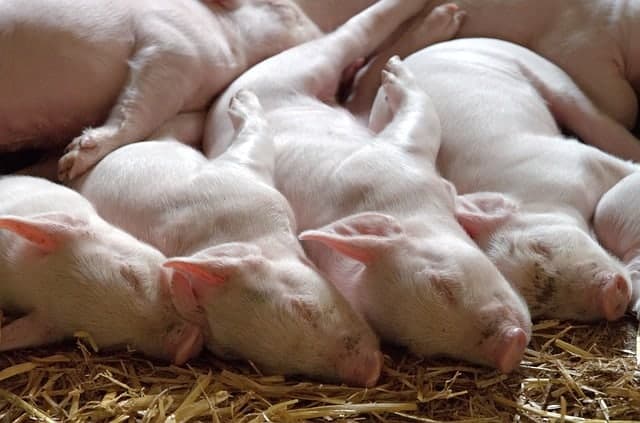If you are worried about the worst practices in agribusiness, there are a few that are worse than others. In the food industry, those are called the dirty six. The absolutely worst 6 agricultural practices according to people who care about such things. I am one of them. If you are equally concerned about the state of our food production system, this post may help.
Posts feature partner companies & may be sponsored. Post contains affiliate links & I will be compensated if you make a purchase after clicking on links. As an Amazon Associate I earn from qualifying purchases.

Table of Contents
Food, Inc. is Eye Opening
I have been reading the companion guide to the movie Food, Inc. I have not seen the movie yet since I wanted to read this first and it has been quite interesting (and disturbing!). Despite not seeing it yet, I have done a lot of research over the last couple of years regarding agribusiness and the problems associated with it.
This book captures every aspect from genetically modified crops and their impact on small farmers and starving nations to the horrors of the slaughterhouse.
One of the chapters is titled “The Dirty Six” and I had never heard that phrase before so I had to investigate. I am going to give you a brief and hopefully NON stomach turning summary of what I found. I don’t want to convert everyone into becoming a vegetarian, However, I do want to make you aware of the issues surrounding the raising of animals for food.
My theory (which you may find odd) is that if we are going to eat animals we should treat them humanely while they are under our care. I guess it might seem weird to say you should take good care of something before you eat it but, that’s my theory and I’m sticking to it! The dirty 6 are practices we need to remove from our food production system.
The Dirty Six: Humane Society of the United States
This information is taken from the Humane Society of the United States. I am not in any way affiliated with them and do not say that I agree with every position they take on every issue.
From the HSUS website: In just one hour in the United States, more than one million land animals are killed for food. Before their slaughter, most of these farm animals—nearly 10 billion each year—endure lives of abuse with virtually no legal protection at all. Considering this staggering figure, the mistreatment of farm animals is among the gravest animal welfare problems in the nation. Instead of being recognized as the social, intelligent individuals they are, chickens, pigs, cows, turkeys, and other animals are treated as mere meat-, egg-, and milk-production units and denied expression of many natural behaviors. And six standard agribusiness practices are the most egregious of all.

✯Don’t want to miss the next post?✯
Follow Turning the Clock Back on Facebook | Twitter | Pinterest
Or join the private Facebook group for simple tips on going green!
The Dirty Six: Worst Practices in Agribusiness
1. Battery Cages:
This cage, which over 300 million hens in the U.S. currently reside in, offers less space than a sheet of paper. They cannot perch, forage, walk, take a dust bath or spread their wings. The cages are stacked one on top of each other inside a windowless warehouse. This type of cage is being outlawed in many countries but NOT the U.S.
2. Fast Growth of Birds:
According to studies done by researchers at the University of Arkansas, if humans grew as fast as today’s chickens, we’d weigh 349 pounds by our second birthday. By selectively breeding for fast growing birds and pumping them full of antibiotics and growth hormones, the bird is on the verge of structural collapse by the time it is slaughtered.
3. Forced Feeding for Foie Gras:
Foie gras (French for ‘fatty liver’ ) is produced from the enlarged liver of a duck or goose. It gets so enlarged and fatty because farmers stick tubes down the bird’s throat and force feed them 2 to 3 times a day for weeks. The liver swells to 10 times its normal size and causes abdominal swelling and pain.
4. Gestation Crates and Veal Crates:
Female sows have a 4 month pregnancy and 60 to 70 percent of them spend this time in cages so small they can’t turn around or take more than a step in either direction.
These gestational cages are being phased out in many European countries but are still the norm here in the U.S. Same story for Veal crates…calves are kept in cages and chained by the neck to restrain them. Before you buy your Easter ham, learn where it came from.
5.Long-Distance Transport:
Most animals sent to slaughter have to travel long distances in non climate controlled trucks and are given no food, water, or rest during this trip. Death during transit is considered common.
6. Electric Stunning of Birds:
Federal regulations do not require that chickens, turkeys, and other birds be rendered insensible to pain before they are slaughtered.
I will not go into the details that I read on the slaughtering of chickens but theses animals last minutes are filled with pain and terror. Not sure what a better method is but there has to be one!

Animal Welfare: In my opinion
I would really like to see us get back to the family farm lifestyle that we used to have. Although, I must admit, if I spent 3 years raising a cow on my farm…feeding it and caring for it daily…I doubt I could bring myself to eat it. There is something about those little packages you buy in the grocery store that remove the ‘animal’ from the ‘meat’.
We, as a nation, also need to reduce our reliance on meat in our diet. We do not need steaks that take up half a plate. Nor do we need meat every day. Think of how many animals we could save if we just did away with fast food restaurants! Want to make a difference when buying food? Look for companies who don’t use the dirty six practices for raising animals.

Diane is a professional blogger and nationally certified pharmacy technician at Good Pill Pharmacy. She earned her BS in Microbiology at the University of New Hampshire and has worked in cancer research, academics, and biotechnology. Concern over the growing incidence of human disease and the birth of her children led her to begin living a more natural life. She quickly realized that the information she was learning along the way could be beneficial to many others and started blogging and freelance writing to share this knowledge with others. Learn more about her HERE.

Hey chick! Just wanted to personally let you know that I have switched to http://www.babesrockinmami.com so if you want to keep up with my antics then please go follow me there! Thank you!